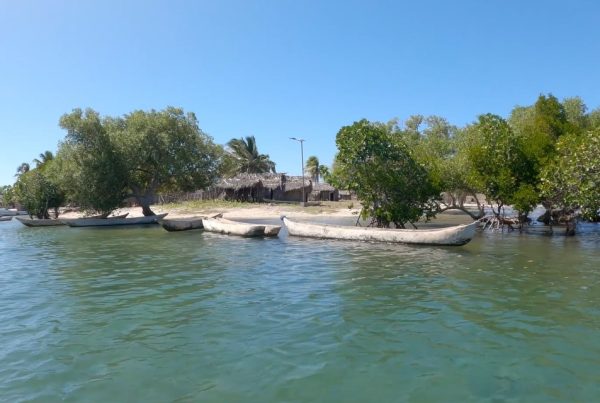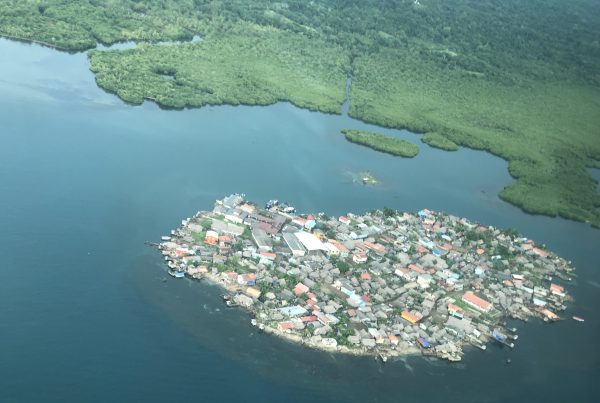The Guna people live in Guna Yala, an archipelago in which most inhabited islands are threatened by rising sea level caused by climate change. Guna Yala contains 81 per cent of Panama’s reefs and has high levels of biodiversity.[footnote]McEntee, M. Assessment of Genetic Connectivity and Potential Management Plans for the Coral Reef Ecosystems of Guna Yala , Panama Assessment of Genetic Connectivity and Potential Management Plans for the Coral Reef Ecosystems of Guna Yala , Panama. (2012). at <http://digitalcollections.sit.edu/cgi/viewcontent.cgi?article=2496&context=isp_collection>[/footnote] The Guna undertake fieldwork to analyse and diagnose problems associated with climate change, both in relation to the ecosystem and in relation to their own socio-cultural and economic systems. Through their research, the Guna have been able to identify and monitor several impacts, including increased mortality of coral reefs, drying up of mangroves and erosion of sandy island ecosystems. These have negative impacts not only on biodiversity, but also on the traditional management of the islands by the Guna.
Related Posts
 Case Study
Case Study
Managing mangroves in Madagascar: women’s associations enhance conservation and livelihoods
Loky Manambato is a highly diverse landscape in northeastern Madagascar spanning 250,000 hectares, and including high massifs, forested areas and grasslands, and a marine/coastal zone. Bounded by two rivers, the area…
Forest Peoples Programme22 December 2025
 Case Study
Case Study
Bottom-up conservation making a real impact on land and sea in Madagascar
This short film illustrates how a bottom-up approach is enabling communities in the Loky Manambato area of Madagascar to protect their land and marine ecosystems.
Forest Peoples Programme20 November 2025
 Case Study
Case Study
Conservation of Mu Billi (Ocean): A step towards collective territorial rights
Creating maps of vulnerable areas help local communities identify areas that need special conservation protection.
Forest Peoples Programme7 April 2025
